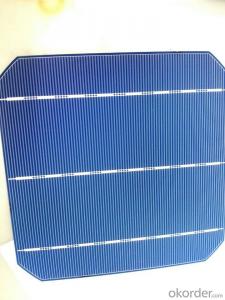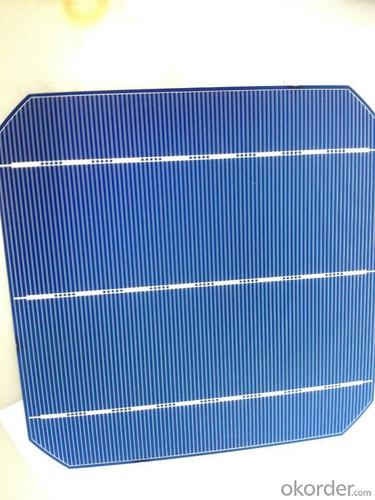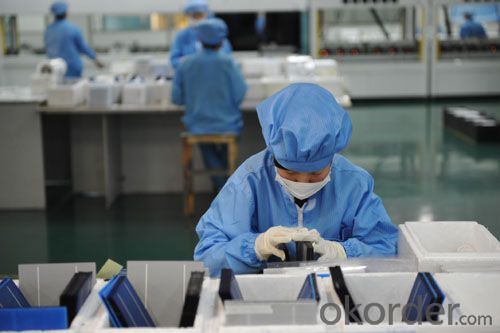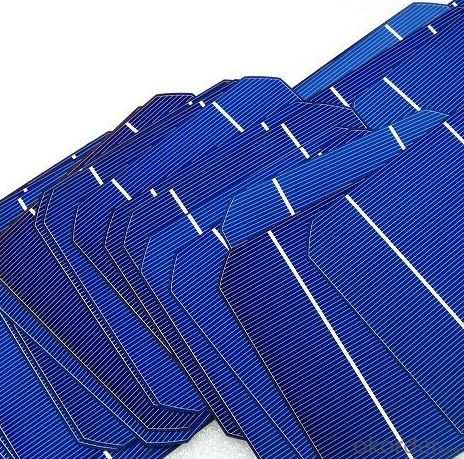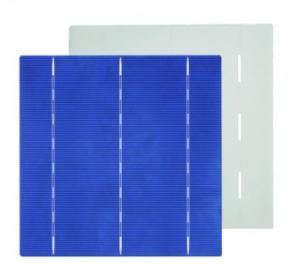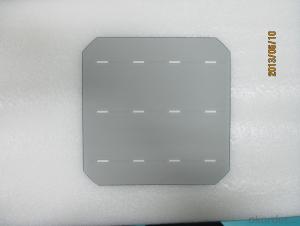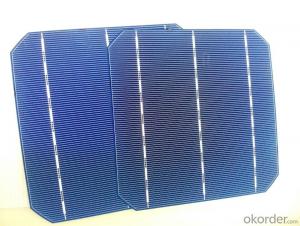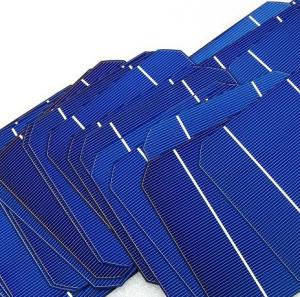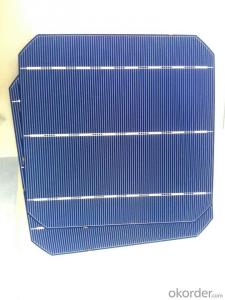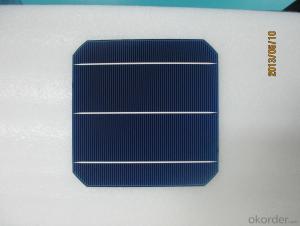Solar Cells on Cars - Monocrystal Solar Energy Cell 156*156mm with 18.2% Efficiency
- Loading Port:
- China Main Port
- Payment Terms:
- TT or LC
- Min Order Qty:
- -
- Supply Capability:
- 1000000 PCS/month
OKorder Service Pledge
OKorder Financial Service
You Might Also Like
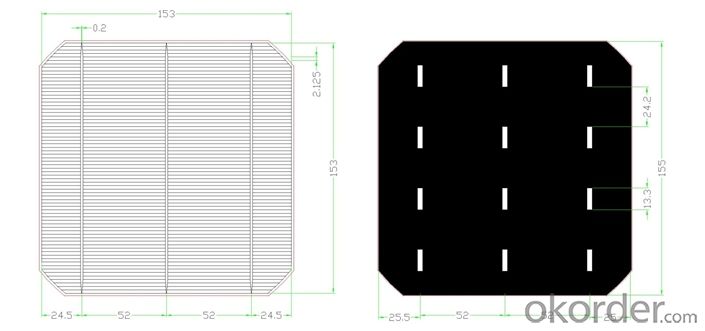
Monocrystal Solar Energy Cell
type:156M
appearance:156×1565㎜±0.5mm;diagonal:R=100mm
Main fence wide:1.4-1.5mm back electrode wide:2-2.5mm
Fence line qty:90
Cell thickness:220um±20um
Eff(%) | 18.20- 18.30 | 18.30- 18.40 | 18.40- 18.50 | 18.50- 18.60 | 18.60- 18.70 | 18.70- 18.80 | 18.80- 18.90 | 18.9- 19.0 | 19.1- 19.1 | 19.1- 19.2 | ||
Pm(W) | 4.35 | 4.37 | 4.40 | 4.42 | 4.44 | 4.47 | 4.49 | 4.52 | 4.54 | 4.56 | ||
Isc(A) | 8.76 | 8.77 | 8.78 | 8.82 | 8.83 | 8.85 | 8.86 | 8.88 | 8.9 | 8.93 | ||
Im(A) | 8.24 | 8.26 | 8.30 | 8.33 | 8.35 | 8.39 | 8.42 | 8.45 | 8.47 | 8.51 | ||
Voc(V) | 0.632 | 0.633 | 0.634 | 0.634 | 0.635 | 0.636 | 0.637 | 0.637 | 0.638 | 0.64 | ||
Vm(V) | 0.529 | 0.531 | 0.531 | 0.532 | 0.534 | 0.534 | 0.535 | 0.536 | 0.537 | 0.538 | ||
FF(%) | 78.8 | 79.0 | 79.2 | 79.3 | 79.5 | 79.6 | 79.8 | 80 | 80 | 80 |

remark:our company cells as per working current concentrate principle,separate the first and the second grade
Factory Picture of Solar Cells
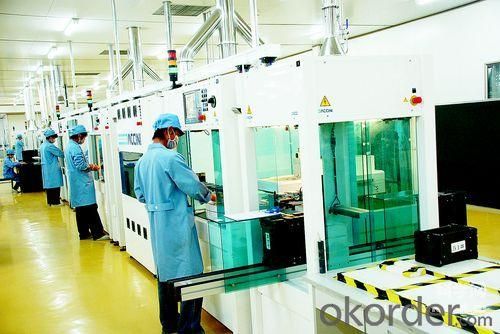
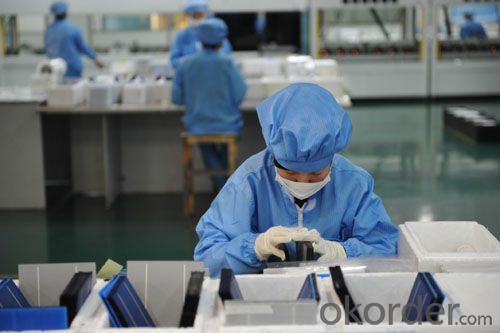
FAQ
We have organized several common questions for our clients,may help you sincerely:
What’s price per watt?
A: It’s depends on the quantity, delivery date and payment terms of the order. We can talk further about the detail price issue. Our products is high quality with lower price level.
Can you tell me the parameter of your solar cells?
We have different series of cells with different power output, both from c-si to a-si. Please take our specification sheet for your reference.
How do you pack your products?
We have rich experience on how to pack the panels to make sure the safety on shipment when it arrives at the destination.
Can you do OEM for us?
Yes, we can.
How long can we receive the product after purchase?
In the purchase of product within three working days, We will arrange the factory delivery as soon as possible. The perfect time of receiving is related to the state and position of customers. Commonly 7 to 10 working days can be served.
- Q: What is the role of solar cells in powering remote surveillance systems?
- Solar cells play a crucial role in powering remote surveillance systems by converting sunlight into electrical energy. They provide a reliable and sustainable source of power, eliminating the need for traditional electrical infrastructure in remote locations. This enables continuous operation of surveillance cameras, sensors, and other equipment, ensuring effective monitoring and security even in areas without access to the grid.
- Q: Can solar cells be used in hybrid systems?
- Yes, solar cells can indeed be used in hybrid systems. Hybrid systems combine multiple sources of energy, such as solar, wind, or traditional grid power, to ensure a more reliable and efficient energy supply. Solar cells can be integrated into these hybrid systems to generate electricity from sunlight, which can be used alongside other sources to meet the energy demands of a particular system or application.
- Q: Can solar cells be used in camping or outdoor recreational activities?
- Yes, solar cells can be used in camping or outdoor recreational activities. They are a convenient and environmentally friendly way to generate electricity in remote locations where power outlets may not be available. Solar panels can be used to charge portable devices such as phones, laptops, or camping lights, providing a sustainable source of energy while enjoying outdoor activities.
- Q: Can solar cells be used for powering remote weather stations?
- Yes, solar cells can be used for powering remote weather stations. Solar cells convert sunlight into electricity, providing a sustainable and reliable source of power for remote locations where access to the grid may be limited or non-existent. This makes solar cells an ideal solution for weather stations that require continuous power supply in remote areas.
- Q: What is the history of solar cell development?
- The history of solar cell development dates back to the 19th century when the photovoltaic effect was first discovered by French physicist Alexandre-Edmond Becquerel in 1839. However, it wasn't until 1954 that the first practical silicon solar cell was developed by Bell Labs scientists. This breakthrough led to the commercialization of solar cells and their initial use in space applications, such as powering satellites. Throughout the 1960s and 1970s, solar cell technology continued to advance, primarily driven by research and development efforts in the United States. The energy crisis of the 1970s further fueled interest in renewable energy, including solar cells, leading to increased investment and technological advancements. In the 1980s and 1990s, solar cells became more efficient and affordable, making them increasingly popular for off-grid applications, such as powering remote locations and providing electricity to rural communities. Governments and organizations worldwide started implementing policies and incentives to promote solar energy adoption. In the early 2000s, there was a significant growth in the solar industry, driven by technological improvements, increased manufacturing scale, and declining production costs. This led to the widespread adoption of solar panels for residential and commercial use, as well as grid-connected solar power plants. Today, solar cells continue to evolve, with ongoing research focused on improving efficiency, durability, and reducing costs. The integration of solar cells into various applications, such as building materials and consumer electronics, further expands their potential. The solar industry plays a crucial role in the global shift towards clean and sustainable energy sources.
- Q: What is the payback period for solar cell installations?
- The payback period for solar cell installations varies depending on factors such as the cost of the installation, the amount of energy generated and consumed, and any applicable incentives or subsidies. On average, it can range from 5 to 10 years, but it is important to conduct a specific analysis considering individual circumstances to determine the accurate payback period for a given solar cell installation.
- Q: How are solar cells made?
- Solar cells are typically made using a process called photovoltaic manufacturing, which involves several steps. First, silicon, which is the main material used in solar cells, is extracted from silica, a component of sand. The extracted silicon is then purified and transformed into a crystal structure suitable for solar cell production. These silicon wafers are then cut into thin slices. Next, various layers of conductive materials and anti-reflective coatings are applied to the wafer, creating the necessary electrical properties and enhancing light absorption. Finally, electrical contacts are added to the cell, allowing the generated electricity to be collected and used.
- Q: How can I understand the working principles of solar cells?
- My way of understand the working principles of solar cells is to read tons of books about that topic.
- Q: How is the efficiency of a solar cell calculated?
- The efficiency of a solar cell is calculated by dividing the maximum power output of the solar cell by the total amount of solar energy it receives.
- Q: Can solar cells generate enough electricity to power an entire house?
- Yes, solar cells can generate enough electricity to power an entire house. The amount of electricity generated depends on factors such as the size of the solar panel system, location, and amount of sunlight received. With a properly sized and efficiently designed solar system, it is possible to generate enough electricity to meet the energy needs of a household.
Send your message to us
Solar Cells on Cars - Monocrystal Solar Energy Cell 156*156mm with 18.2% Efficiency
- Loading Port:
- China Main Port
- Payment Terms:
- TT or LC
- Min Order Qty:
- -
- Supply Capability:
- 1000000 PCS/month
OKorder Service Pledge
OKorder Financial Service
Similar products
Hot products
Hot Searches
Related keywords
